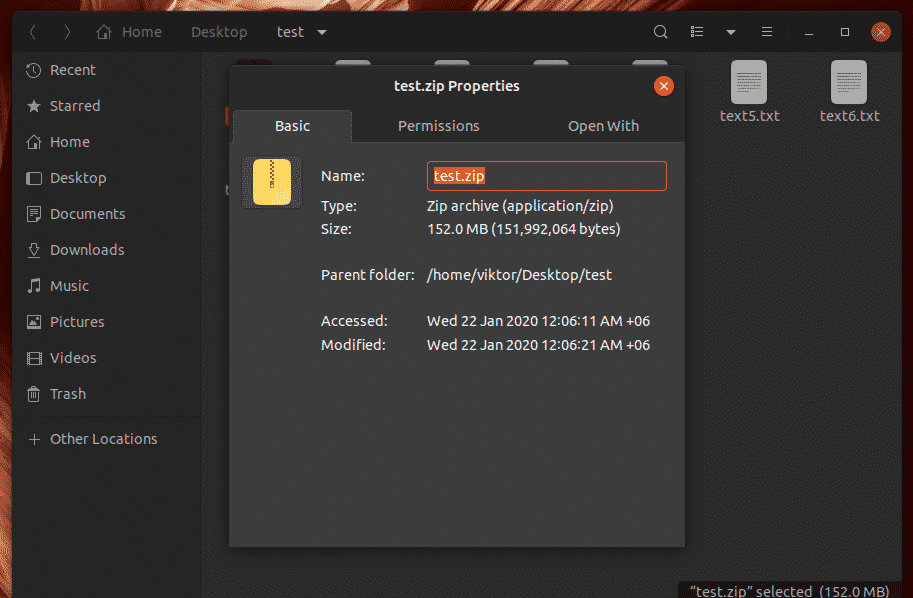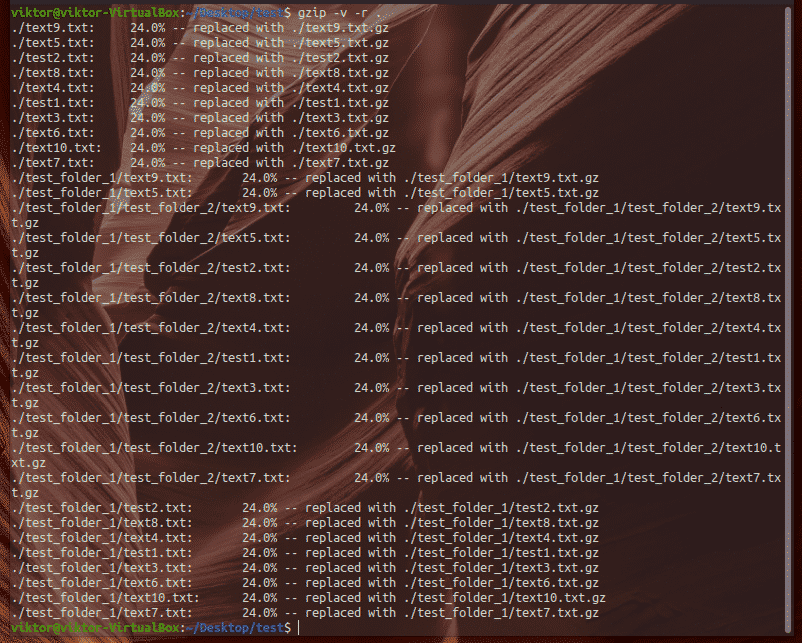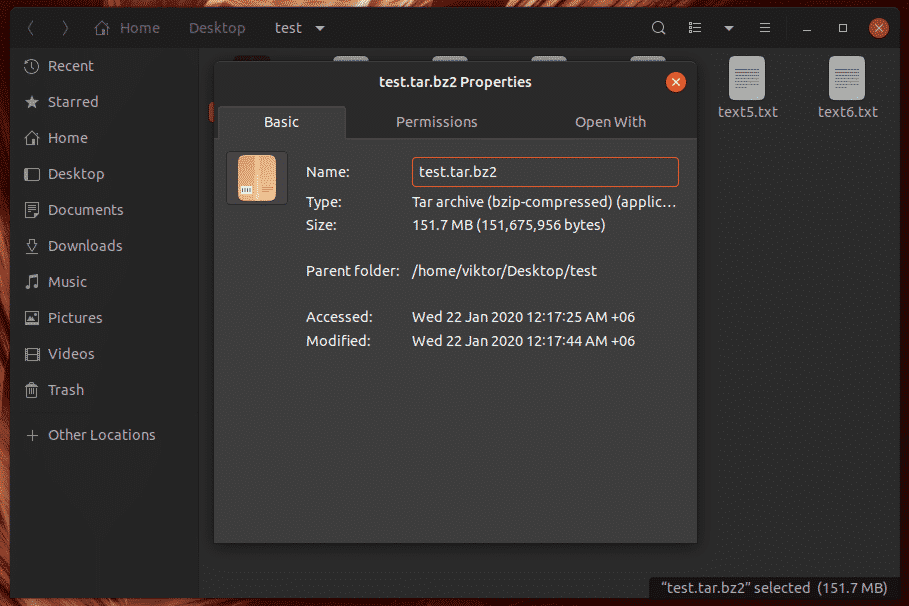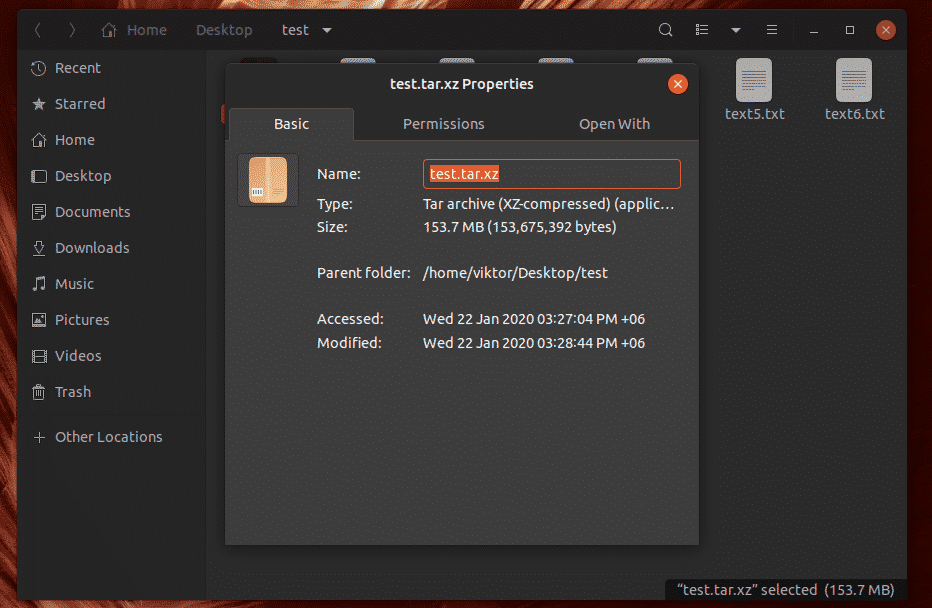- Linux tar Command – How to Compress Files in Linux
- What is the tar command?
- How to create an archive
- How to remove files after compression
- How to view the contents of an archive
- How to extract an archive
- How to search in compressed log files
- Wrapping Up
- Linux File Compression Options and Comparison
- Compression types
- Linux compression
- Zip For Compression
- Tar for Compression on Linux
- Gzip for Compression on Linux
- Bzip2 for Compression on Linux
- XZ for Compression on Linux
- Extracting compressed archives
- Final thoughts
Linux tar Command – How to Compress Files in Linux
Zaira Hira
File compression is an essential utility across all platforms. It helps you reduce file size and share files efficiently. And compressed files are also easier to copy to remote servers.
You can also compress older and rarely used files and save them for future use which helps you conserve disk space.
In this post, we’ll look at how to compress files with the tar command in Linux, along with some examples of tar in action.
What is the tar command?
We use the tar command to compress and expand files from the command line. The syntax is shown below:
tar [flags] destinationFileName sourceFileNameThe tar command uses the following flags to customize the command input:
| Flag | Explanation | Usage |
|---|---|---|
| -c | Create a new archive. | We use this flag whenever we need to create a new archive. |
| -z | Use gzip compression. | When we specify this flag, it means that archive will be created using gzip compression. |
| -v | Provide verbose output. | Providing the -v flag shows details of the files compressed. |
| -f | Archive file name. | Archive file names are mapped using the -f flag. |
| -x | Extract from a compressed file. | We use this flag when files need to be extracted from an archive. |
How to create an archive
We have a list of the following files which we’ll compress with tar .
To compress them, we’ll use tar like this:
tar -czvf logs_archive.tar.gz *Let’s break down this command and look into each flag.
-c is creating and archive.
-z is using gzip compression.
-v is providing details of the files that have been archived.
-f is creating an archive with the name ‘logs_archive.tar.gz’ as supplied in the command above.
In the results below, we can see that the archive has been created successfully.
How to remove files after compression
Let’s say we don’t want to keep the original files after creating an archive. For that, we can use the —remove-files flag.
tar -czvf logs_archive.tar.gz * --remove-filesHere, the -czvf flags are working as demonstrated before, but the original files are also removed. Once we list the files, we only see the archive.
How to view the contents of an archive
You might need to view the contents of an archive without actually extracting it. You can do this with the -t flag.
tar -tvf logs_archive.tar.gzIn this command, -t flag specifies that we need to only view the contents of the archive. -f specifies the filename and -v displays the detailed contents.
How to extract an archive
To extract files from an archive, you use the -x flag like this:
tar -xzvf logs_archive.tar.gzLet’s break down this command and look into each flag.
-x is extracting and archive.
-z specifies that the archive is gzip.
-v is providing details of the files that have been archived.
-f is extracting from the archive named ‘logs_archive.tar.gz’.
Here’s a useful tip: commands that take a long time to execute can continue in the background with & .
Adding files to an archive and extracting an archive can take a while. To keep the commands running in the background while you keep working, pair the command with & like this:
tar -xzvf logs_archive.tar.gz &How to search in compressed log files
You might still need to access certain files once they’re archived. Luckily, there is a method you can use to search and view compressed log files without decompressing them and compromising disk space.
The command you can use to search in compressed files is zgrep :
We can search for a string in an archive using the below command:
zgrep -Hna 'string-to-search' compressedFile.tar.gz Let’s briefly look at the flags.
-H lists the file name that contains the match.
-n displays the line number that contains the matched string.
-a treats all files as text files.
Wrapping Up
File compression helps us save time and resources when sharing files. Servers are almost always rotating and archiving huge log files.
You can also schedule file compression via cron jobs to automate disk cleaning. I highly recommend that you take advantage of this utility.
Thanks for reading until the end. I would love to connect with you. You can find me here on Twitter. Do share your thoughts.
Linux File Compression Options and Comparison
Compression, in general, is a useful method that is essentially encoding information using less data than the original one. In the case of Linux, there are various compression options, each with its own benefits.
A generic Linux distro offers access to a handful of really useful and simple compression mechanisms. This article will only focus on them.
Compression types
Compression is encoding and representing information using fewer bits than it originally was. In the case of file compression, a compression method utilizes its own algorithm and mathematical calculation to generate an output that’s generally less than the size of the original file. Because of how different compression works and the random nature of files, the mileage may vary greatly.
There are 2 types of compression.
- Lossy compression: This is a risky type of compression that doesn’t guarantee data integrity. Essentially, once compressed, there’s a risk that the original file can’t be reconstructed using the compressed archive.
A solid example of this type of compression is the well-known MP3 format. When an MP3 is created from the original audio file, it’s significantly smaller than the original source music file. This causes loss of some audio quality. - Lossless compression: This is the most widely used type of compression. Using a “lossless” compression method, the original file can be reconstructed from the compressed file. The compression methods I’ll discuss in this article are all lossless compression methods.
Linux compression
Majority of the compression methods are available from the tool tar. As for the “zip” compression, we’ll be using the zip tool. Assuming that your system already has these tools installed, let’s get started.
At first, we need a test file. Run the following command to create one.
It’ll create a text file with 20MB size.
Now, let’s create 10 copies of the file. Together, it’s 200 MB.
Zip For Compression
Zip is quite common. For creating a zip file, the zip tool requires the following command structure.
To compress all the files under the test directory in a single zip file, run this command.
The input size was 200 MB. After compression, it’s now 152 MB!
By default, the zip tool will apply the DEFLATE compression. However, it’s also capable of using bzip2 compression. Not only that, you can also create password-protected zip files! Learn more about zip.
Tar for Compression on Linux
Tar isn’t a compression method. Instead, it’s most often used for creating archives. However, it can implement a number of popular compression methods to the archive.
For handling tar (also known as “tarball”) archive, there’s the tar tool. Learn more about tar. Generally, the tar tool uses the following command structure.
To add the test files into a single tar archive, run the following command.
Here, the file size remains the same.
Gzip for Compression on Linux
GNU Zip or gzip is another popular compression method that, in my opinion, is better than the traditional zip because of its better compression. It’s an open-source product created by Mark Adler and Jean-Loup Gailly that was originally destined to replace the UNIX compress utility.
For managing gzip archives, there are 2 tools available: tar and gzip. Let’s check out both of them.
First, the gzip tool. Here’s how the gzip command structure looks.
For example, the following command will replace test1.txt with test1.txt.gz compressed file.
If you want to compress an entire directory using gzip, run this command. Here, the “-r” flag is for “recursive” compression. Gzip will go through all the folders and compress the individual file(s) in each of them.
Gzip supports various compression strength value, starting from 1 (least compression, fastest) to 9 (best compression, slowest).
For better control over the output and ease-of-use, tar is better for the task. Run the following command.
The result is similar to zip using DEFLATE, resulting in 152 MB after compression.
Bzip2 for Compression on Linux
Bzip2 is a free and open-source tool that uses the Burrows-Wheeler algorithm for compression. First introduced back in 1996, bzip2 is heavily used as an alternative to the gzip compression.
Like gzip, there are 2 tools to work with bzip2: tar and bzip2.
The bzip2 tool works similar to the gzip tool. It can only work with just a single file at a time. Here’s the command structure.
Let’s compress the test1.txt file. Here, the “-v” flag is for verbose mode.
Similar to gzip, bzip2 also supports different level of compression, starting from 1 (default, less memory usage) to 9 (extreme compression, high memory usage).
The better way of using bzip2 compression is by using tar. Use the following command.
The compression is slightly improved than the previous ones. Now, the file size has shrunk to 151.7 MB.
XZ for Compression on Linux
It’s a relative newcomer in the field of compression. First released in 2009, it has seen a steady growth of usage since then.
The xz compression tool uses the LZMA2 algorithm that’s known for greater compression ratio compared to gzip and bzip2, making it a great choice when you want to save the maximum amount of disk space. However, this comes with the cost of higher memory requirements and time consumption.
File created by the XZ compression tool has the extension .xz. For compressing a single file, you can directly call the XZ tool.
For example, run the following command to compress the test1.txt file.
Similar to other compression methods mentioned, xz also supports various range of compression strength, starting from 1 (lowest compression, fastest) to 9 (best compression, slowest). If you don’t have any regard for time and just want to save space, then go for the extreme.
To create a compressed XZ file from all the test files, run this command.
Here, the output file size is 153.7 MB.
Extracting compressed archives
Extracting the archives we created is easier than creating them. To extract a zip file, use the following command structure.
To extract the zip archive we created, run this command. This will extract all the contents in the same directory.
For extracting tar, tar.gz, tar.bz2 and tar.xz archives, we have to use the tar tool. The following tar command is applicable for extracting all of them.
For example, let’s extract all the files from the bz2 compressed archive.
To decompress a gzip (not tar.gz) file, run this command.
Similarly, the following command will decompress bzip2 archive.
Same command structure applies for xz archive.
Final thoughts
Hopefully, now you have enough knowledge to handle the compression tasks in different circumstances. Depending on the specific requirement, all the compression methods offer very attractive features.
One important thing to note is, the compression result won’t be the same all the time. With different data input, the output will be different. For example, in some cases, xz can offer insane compression result whereas in this example, it didn’t. Same goes for other methods.
To learn more in-depth about these tools, check out their respective man page.






























